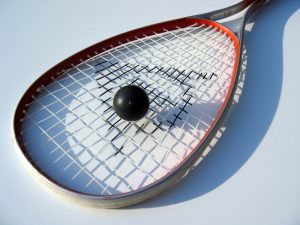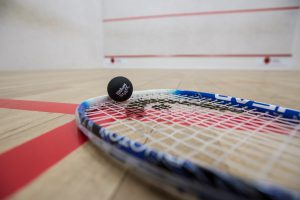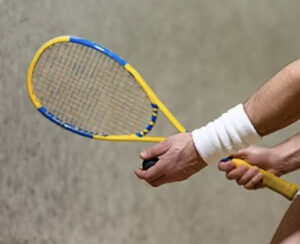With Christmas just weeks away there is a strong chance you have a new Squash racquet on your wish list – whether you are a beginner or an experienced player looking for a new racquet – there are a few things to consider when purchasing a new one or having a relative getting you a new one.

For many of you, this will surely be a rehash of what you already know, though perhaps there may be items you have not thought of before.
Nevertheless, for beginners, while all of the below will be essential in your decision-making criteria, the most important thing you can do is visit your local squash courts and ask for a practice hit.
Most Squash players all know the trials and tribulations of the sport; such as from mastering techniques to buying new a new racquet, the game can be unforgiving for beginners. If you are interested in purchasing a new racquet and are unsure of what to look for, the following will direct you to a suitable racquet for yourself.
Weight of the Racquet
Like Squash’s racquet cousins, Tennis and Badminton – the weight of your Squash racquet, is an essential factor in your match performance.
According to Head, one of the leading Squash equipment manufacturers, states:
“By contrast heavier framed rackets, starting from 140 grams, are at their best when used by a player with a slower racket swing who perhaps favours a more defensive traditional style of squash.”
The weight of Squash racquets varies between ~120 grams and ~210 grams. Most racquets fall into a range of 140-170 grams (strung).
The lighter squash racquet will indicate cutting-edge technology & materials that have been used in its construction, which invariably leads to an increase in price.
Heavier racquets on the other hand do not require the same level of skill and technique to be effective. The additional weight provides more power during a swing. This additional weight in the squash racquet provides more momentum to the swing which means that as a Squash player, your shot is less likely to run afoul. This is a very good thing for a beginner to intermediate Squash players who want to improve their overall game and increase their confidence with more consistent shots.
As for Lighter racquets, these are suitable for juniors, women, and ‘touch’ players.
Most juniors and women squash players will prefer the lighter racquet as they will be easier to carry and less straining. Touch players will prefer the lighter racquets as they provide a better feel and allow for improved racquet agility. The more experienced players amongst us will benefit the most from a lighter racquet.
Balance of a Squash Racquet
The Balance of a Squash Racquet varies substantially in where it’s centre of balance lies. A Racquet is either head heavy, head light, or neutral.
Neutral is what most people prefer, and the other options typically indicate a poor balance and poor design. Squash racquets that feel heavy are typically head heavy. Racquets that feel powerless are typically headlights, thus giving you a better performance on the court.
The only true way to get an idea of how a racquet is balanced is to try it out. Get to your local squash courts and try before you buy!
Stiffness of a Squash Racquet
When it comes to the Stiffness of the Racquet is dependent upon the design of the racquet, the materials used in the racquet, and the strings. Stiffer racquets typically provide a higher degree of accuracy and increased power but require a better grasp both literally and of squash techniques.
Racquet stiffness is often a personal choice. If you find that you often get sore, bruised hands or tired forearms, try using a softer racquet. Also, add some softer grip tape.
Shape of a Squash Racquet

Sounds odd? The Shape of the Racquet Head is a key point when picking out a racquet for a beginner and a racquet for a more experienced player. A hard and fast rule is larger racquet heads provide a more consistent and powerful shot. A consistent shot means there will be fewer ‘faulty’ shots due to an increase in the margin of error, though not necessarily an increase in accuracy.
Strength of a Squash Racquet
Racquet Strength and durability are affected by craftsmanship, build material and player! While many manufacturers use all sorts of fancy materials nowadays, the key to a racquet lasting a long time is left to the player. Too many hard blows to the wall or to the ground will make short work of nearly all squash racquets.
Though it has become commonplace that titanium racquets do not last very long; apart from this, by sticking to most of the typical squash racquet manufacturers (Head, Dunlop, Prince, etc.) the durability of your racquet should be a moot point.
Stock Grip of a Squash Racquet

Just for a few dollars (or pounds) you can upgrade your grip straight away and build it up to the thickness and feel that you desire. Play around with this as the grip makes a very big difference to your ability to control the racquet!
Read: How to grip a Squash racquet
Final Thoughts
Try, Before You Buy is the motto that I live by when looking at a new racquet. The only real way to determine whether that fancy new racquet is for you is by taking it for a hit down at your local courts.
Even though Squash has evolved over the years when it comes to selecting a Squash racquet the same fundamentals will apply.
Guest Blog by Donovan Kirk, a renowned Squash player, and coach

